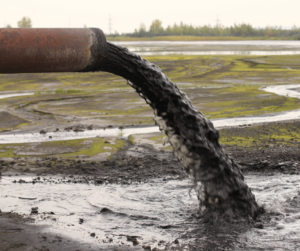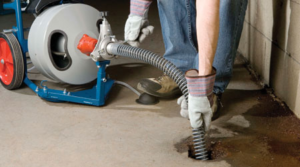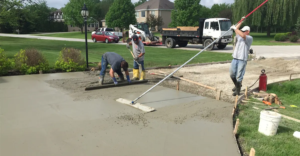Las Vegas Drywall Repair is necessary whenever drywall damage occurs in your home. Whether it’s from moving furniture with sharp corners, water damage, or even pest infestations, ignoring these problems can become bigger structural issues in the future.
When looking for a contractor to handle your drywall and painting project, request references and a portfolio to get an idea of their work. Then, choose the type of drywall repair you need:
Even drywall isn’t perfect, and holes are an inevitable part of owning a home. Some, like nail holes and small dents, are easy to cover with a bit of spackle and a smoothing tool; others, such as large gouges or cracks, may require patching or replacing. Assessing the damage will help you determine the best repair method and materials to use.
For small holes and dents, you can fill the blemishes with a thin coat of joint compound (also called drywall mud) applied with a putty knife made for this purpose rather than a narrow utility knife. Use a sponge or sanding block to smooth the compound so it blends with the wall; you can also lightly sand it afterward for a smoother finish. A second coat of mud is optional, and it’s a good idea to “feather” the edges of the patch in a crisscross pattern so the area looks more like the rest of the wall, not like a raised blob of compound.
If you want to repaint the wall, prime it first to prevent the patch from showing up through a high-gloss paint. Drywall primer is available in a variety of sheens, so you can choose one that matches the sheen or color of the surrounding paint.
Alternatively, you can purchase a drywall patch kit that includes a mesh patch designed to stick to the wall and fill the hole. This is a quicker solution for smaller dents, but it can be difficult to get the patch straight, especially on a vertical surface.
When using a patch kit, carefully read the directions and follow the manufacturer’s instructions. For example, some require you to pre-cut the hole with a power saw or keyhole saw; others ask that you drill two holes and feed string through both of them. Tie one end of the string to a piece of wood that will be used to hold the patch in place; twist the stick to apply pressure to the back of the patch, which keeps it from moving once you’re done working.
For larger holes, you’ll need to cut a piece of drywall to size and adhere it to the wall with cement adhesive. Before applying the glue, however, make sure you know where the utility wires are in your house, as it’s important to avoid cutting any hidden electrical lines. Apply a strip of mesh tape to the border of the patch; this helps strengthen the repair, reduce shifting and prevent future holes from appearing. After the patch is in place, apply a thick coat of joint compound over it and the tape, then use your putty knife to smooth it; sand it afterward to eliminate any humps and give the area a more natural look.
Replacement
Drywall is a material that is used in many homes for a variety of reasons. It is light, cheap, and acts as a fire retardant. However, over time drywall can lose its integrity due to poor installation or water damage. When this happens, a home owner needs to have the damage repaired and then repaint the walls so that they look good again. A drywall repair expert will be able to help homeowners with this task.
When a home owner notices that their drywall is damaged, they may be unsure of whether they should handle the repair themselves or hire someone to do it for them. While handling a drywall repair job yourself can save you money, you should only do this if you are comfortable and equipped to do it properly. This can be a very time-consuming and difficult task for someone who has never done it before.
A drywall repair professional will have the experience and tools to fix your wall quickly and efficiently. They will also be able to ensure that the work is of a high quality and that your walls look nice once again. It is a good idea to shop around for a drywall repair pro before hiring one. There are many different types of pros, and some will charge more than others. Using a site like Thumbtack can help you find a pro who is both affordable and reliable.
Small holes and scrapes in drywall can often be patched up with spackle. A drywall repair expert will be unable to tell you for sure if the hole is from an old nail or screw, but they can usually guess at its size and location. After filling the hole, a drywall repair specialist will smooth it over with a tool and then paint it to match the surrounding walls.
If the hole is bigger than a nail or screw, a new piece of drywall must be cut and attached to the wall. This type of repair is more involved and requires the use of drywall tape and joint compound to make it secure and smooth. A drywall repair professional will know how to do this and will also be able to provide any necessary electrical or plumbing repairs.
Repairing Large Holes
Small holes caused by nails, screws, or the removal of wall decorations can often be repaired with drywall spackle. However, large holes require more than just a bit of spackle and some joint compound to fill in. Depending on the hole size, you may need a patch, a drywall knife, and/or a sanding tool.
When it comes to repairing a larger hole in your drywall, first use a stud finder to locate and mark the nearest studs on either side of the hole. This ensures that the new drywall patch will be attached to a solid support structure and prevents future problems with water leaks or the wall collapsing. Next, cut a piece of drywall that is the same size as the existing hole and install it. Before doing so, make sure that the edges are flush with the surrounding drywall to ensure a seamless appearance. Once the patch is in place, apply a strip of drywall tape to the edges of the new piece to seal it and provide further protection from moisture.
Once the drywall tape is applied, apply a thin layer of joint compound to the patch and surrounding drywall. Then, using a drywall knife, spread the compound in a crisscross pattern over the patch and around the edges of the patch. This process is called “feathering” and ensures that the patch blends seamlessly into the rest of the wall. When the joint compound is dry, sand it lightly with progressively finer grits of sandpaper to ensure that it is completely smooth.
If you’re not comfortable or equipped to handle a larger repair job yourself, a professional drywall company can easily fix large holes. In addition to installing a quality patch and sanding the entire surface, a professional will also apply a new coat of primer and a fresh coat of paint to ensure that the repair is invisible.
Taking steps to repair any damaged areas in your drywall will help to extend the life of your home’s interior walls and ensure that they look great when it is time for interior painting. If your drywall has been damaged, contact the experts at your local PDX Paint & Decorating to schedule a free estimate.
Repairing Cracks
Whether from age, natural disaster or just general wear and tear, cracks in drywall are inevitable. Structural cracks are serious and affect the integrity of your home, and they must be repaired immediately to prevent further damage and further deterioration. Non-structural cracks are less serious but still need to be fixed before they worsen. They usually appear along joints in a wall, and they’re easy to fix with simple materials.
To repair small holes in a drywall, apply a thin coat of spackle or joint compound (also known as drywall mud) to the surface. Smooth the filler with a putty knife that’s specifically designed for drywall repair (rather than, say, a narrow utility knife). If you’re using spackle, make sure you get it pre-mixed; the mix dries quickly and will shrink as it sets, making a patch uneven.
For a more durable repair, use a flexible joint compound instead of a standard drywall putty. It’s easier to work with and will last longer. Apply a textured finish on top to hide the repaired area, if desired.
A crack in a drywall seam is less easy to fix than a hole. First, you need to widen the crack with a utility knife or chisel to see if it goes through the drywall’s paper tape and into the stud cavity. If it does, you’ll need to remove the damaged tape and re-tape the seam. Otherwise, you can simply fill the crack with joint compound and sand it smooth.
When repairing a crack, be sure to prep the area by cleaning it and applying a primer. If you don’t prime the patch, it won’t be able to hold a coat of paint.
Once you’ve cleaned the crack, apply a layer of joint compound to the stud and the wall surface. Apply a second coat and “feather” the edges to blend it in with the surrounding wall for a smooth finish. For best results, use a sanding sponge with progressively finer grits to smooth the dry layers of compound.
Besides the repair supplies mentioned above, you’ll also need a few other items to complete this project, including a putty knife, a gallon tub of joint compound and a roll of drywall paper tape. You may also want to pick up a can of quick-setting joint compound, which sets faster and won’t shrink as it dries.




